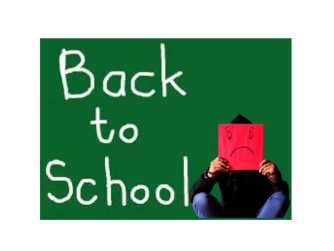
Welcome to another edition of Transparency in Teaching: The News Edition. Every other week I’ll bring you three news stories I feel shine a light on student achievement and educational outcomes. Today’s news covers how Mastery Learning is now a thing in all 50 states. Why the Carnegie Unit that has defined learning for 100 years is obsolete, and I’ll show you the money, at least I’ll break down how the US is funding Education.
00:01:33] Mastery learning in all 50 states.
[00:09:41] Replacing the Carnegie unit. [00:19:07] Education funding in the US.Wyoming makes it 50
This news story is sort of an update to the last episode Jen, and I did on mastery learning.
In that episode, we wondered why this type of evaluation wasn’t more widely spread. This story clarifies the fact that mastery learning is indeed widely spread. In fact, It’s now spread across the entire United States as Wyoming just became the final state to approve using mastery learning to replace traditional letter grading.
The state superintendent of Public Instruction, Megan Degenfelder, came from a private-sector background in the coal, oil, and gas industries. This experience helped cement her view that student achievement and educational outcomes were leaving students unprepared for life outside the classroom. Sharing this perspective helped her to get the votes to consider mastery learning as a replacement for letter grades.
Implementation determined by each state
Mastery learning is not a new concept. In 2012, 28 states had some policies addressing competency-based learning. About a decade later, they have all made at least some move to adopt the model.
The way states implement mastery learning varies from state to state. Ranging from comprehensive policies where states help build capacity in local school districts to states that are a bit more restrictive on implementing mastery learning. (You can check out an interactive state map that shows where each state is in implementation.)
Aurora Institute is an organization focused on promoting best practices to advance educational outcomes. They define competency-based education as having the following attributes:
- Allows students to make key decisions about their own learning and progress at their own pace;
- Is tailored to individual student’s needs and learning styles;
- Is based on common and clear expectations.
- Relies on meaningful assessments that deliver timely, actionable results;
I like this because the current way we test at the END of the school year doesn’t allow teachers the time to course correct before summer starts the annual learning backslide. We need better coordinated, regular testing that lends itself to more prescriptive interventions. I don’t mean big multi-choice tests but ways to measure student growth as we try to ensure students are on track to meet the standards. This could be project-based or some other way to show that learners can synthesize information in a meaningful way.
Mastery Learning needs lots of decision making
So it’s great that everybody recognizes that we need to advance students based on their knowledge and not how many hours they spend in a classroom, but if this is to really take root, there need to be standardized ways to evaluate learning.
I mean, If each state is left to define the student achievement and educational outcomes that will determine when a student can move forward, and if there are no clear standards across school districts, I can see a problem for students who are applying to college. Colleges will need some way to determine which students are properly qualified to accept.
To this point, to graduate from high school, there will have to be agreed-upon ways to demonstrate students have mastered the standards. School leaders must know which standards students must master in the first place and how students will demonstrate this mastery.
Carnegie Foundation looking for a new unit
In a related story: One of the problems with moving to mastery-based learning is how to measure that learning has happened. Currently, schools and universities use this thing called the Carnegie unit to define how much time is needed to consider a subject learned. I had no idea what a Carnegie Unit was. Raise your hand if you know what a Carnegie Unit is. Uh-huh, just what I thought a few EduGeeks out there know this, but for the rest of us, let me try to explain:
Way back in 1906, the people associated with higher education felt that there was no way to actually know what students were being exposed to in high schools. The Carnegie Foundation took it upon itself to create norms and expectations that would standardize adequate preparation for higher education. They really didn’t want to dictate what exactly would be taught, so they decided that time spent would be a handy way to determine the adequate amount of learning needed before applying to college.
What’s a Carnegie Unit anyway?
The Carnegie system measures how much time students spend directly with a teacher, with a standard unit requiring 7,200 minutes of instruction—an hour each weekday for 24 weeks—to earn one credit in a given subject.
The standard diploma in most districts still requires 18 to 24 credit hours/class and is exclusively based on seat time. Think about it, at the elementary level, it is all about time spent in class as we move kids forward regardless of their grades or ability. High schools still move kids forward, but they may fail to graduate if enough F’s cancel out their time in a seat.
Last year, however, the Carnegie Foundation announced they were looking to ditch the time unit with a more modern measure of student achievement, which could include mastery of subjects.
Timothy Knowles, who became the 10th president of the Carnegie Foundation in 2021, believes the Carnegie unit doesn’t account for the way people actually learn. As a result, the foundation has just launched what Knowles expects to be a decade-long research, practice, and legislative initiative to replace time as the essential measure of learning.
How do you measure learning that has already happened?
Knowles believes that the Carnegie unit is hindering learning innovation at scale because until there is some agreement on how to measure knowledge and how much learning is enough, schools will still continue to rely on seat time to calculate when learning has had enough time to take place. Knowles says, “We need to figure out how to value and validate what learning has taken place and translate that into a form that both postsecondary schools and employers will understand.”
The Carnegie Foundation has established a group of superintendents from the ten largest city school systems to discuss how to establish standards of learning that are not based on time or place (like only in schools) and think about new roles for teachers and businesses as partners in learning. Still, it is difficult to replace something that has been so ingrained in how we define learning.
Because right now, time is the basis for how schools are organized,
- when assessments are timed
- what goes on a transcript;
- what accreditation is;
- who gets financial aid and who doesn’t.
Knowles knows (and so do the rest of us) that research and neuroscience have shown:
- We learn through immersive experiences,
- We learn from mentors, experts in apprenticeships and internships, and from peers.
- We learn at highly variable rates depending on the subject of study.
With this in mind, we need to disconnect the idea that time is responsible for student achievement and educational outcomes and replace it with a way to demonstrate a person’s ability to synthesize and use knowledge to be creative and solve problems.
Right now, it’s up to states to decide how to implement mastery learning. As mastery-based learning grows and is incorporated into our school system, it will be interesting to see how universities interpret student achievement and educational outcomes from different states when deciding who to accept.
How many school days are enough?
Here’s a little side note: Doing all this research into “time equals learning” got me thinking about why 180 days of school. At least that’s how many days we have for students in our district. I was trying to add up Carnegie Units to see if that worked out ( It didn’t. It comes out to around 120 days a year). Now I could be wrong here. I’m an English teacher, not a math teacher. Although I’m fully aware that is a lame excuse for not being able to “do the math,” So if you want to do the math and let me know how far off I am, please do) But here’s what I did find out:
Most schools today have 170 -180 days of school. Schools didn’t really establish average until after 1974, when child labor laws changed, making it illegal for children under 16 to work.
In 1890, the average number of school days attended was 86. Children went to school when it was convenient, as many needed to help earn a living for their families. They had childcare duties, worked in factories, or helped on the farm.
Maybe it’s time to end the August to May/June school year and just make learning happen year-round and at one’s own pace.
For a terrific explanation of how we ended up with summer vacation, to begin with, read the PBS News Weekend article about why the farm theory is really kind of bunk. You can find the link on our website.
Show me the money
The final news story for this edition uses an EdWeek article outlining how the government and school districts spend money on student achievement and educational outcomes. They used the school district surveys conducted by the U.S. Census Bureau, so the most recent data available is from the 2021 school year, but this can give a pretty accurate idea of how much is going where and to whom.
Overall funding for K-12 schools in the U.S. grew by $38 billion during the 2020-2021 school year. Yay! Well, not so fast. Most of this growth is largely attributed to the infusion of pandemic relief aid the federal government approved for districts. That investment totaled just shy of $200 billion.
It will be interesting to see what happens to funding now that the pandemic handouts have ceased. I am always a bit skeptical of money that comes in the form of “temporary” status, like these pandemic hand-outs or grants. Schools get great things started with these limited funds. Then “Poof,” no more money to keep the programs going. It often feels like being teased, “Look at all these pretty things we have, then oh, sorry, the money ran out.” If worthy programs get funded, then shouldn’t the funding continue? It’s like the waiter taking your dessert plate away before you finish. Ok, I’m ranting… let’s move on…
Education spending on par with defense dollars
Together America spent $809 billion on K-12 schools. This money comes from the combined state, local, and federal sources (like Title I and IDEA Individuals with disabilities act)—Up 30 billion from the previous year. Once again, this number partly relies on the Covid infusions.
The shocking thing about that number is that it is roughly equivalent to the amount of your tax dollars the federal government allocates each year on defense. Priorities, it seems. This is where I’d insert that rolling eye emoji face.
The portion of the state’s education budget that the federal government funds is only 7.5%. Most school funding consistently comes from a mixture of state aid (45 percent) and local tax revenue (44 percent). But during Covid, the Fed kicked in 10.5 %.
Schools have invested in summer and tutoring programs using this federal injection of money. If that dries up, will the support programs created to improve student achievement and educational outcomes dry up too? I don’t think it’s possible to undo all that damage with a few weeks of summer school or tutoring. Ahh, will this turn into another dessert plate being removed early?
Let’s talk about per-pupil funding
The average amount spent per K-12 student nationwide is $14,347, up from $13,501 in the fiscal year 2020. Adjusted for inflation, education funding per pupil nationwide has risen by about $1,800 in the last decade.
On the article’s webpage, you can click on an interactive map showing what each state spends per pupil.
On average, Arizona, Idaho, and Utah spent less than $10,000 per student. Not to “state shame,” but each spent an average of roughly $9,600 per student. Now, of course, one must consider the cost of living and the number of students these states serve.
Because on the other end of the spending continuum are Connecticut, Massachusetts, New Jersey, New York, and Vermont. These states spent $20,000+ on per-pupil spending. Most taxpayers contribute between 3 – 3.9% of their tax dollars to their state’s education. But in these higher per-pupil spending states, taxpayers contribute a greater portion of their tax dollars to education, for example,
4.65% NY and 5.3% Vermont.
It’s not easy to find the truth
I live in California, and I got kind of interested in what my state spends per pupil. I mean, California politicians are always bragging about how we have the 5th largest economy in the world. So I would suspect we would be in the upper range of per-pupil spending.
Calif spends $14,895 (2020 – 21 census), slightly above the average. $14,347. But then, when I crossed checked this from other sources, things got really confusing. For example:
- $13,642 2022
- $12,498 in 2023
- $15,261 according to the 2022-23 Governor’s budget summary or if you add all funding sources, including federal funds
- $22,893 in 2022–23.
So now I’m even more confused. I guess I can say we spend less than New York but more than Alabama. Much of the interpretation has to do with whether the amount listed is including federal monies or the number of students. In any case, if anyone can help me figure out the correct number, please let me know!.
I’ll put all the links I used to find these different amounts on our website.
Doling out dollars for teachers
By far, the largest cost of education is paying teachers’ salaries and benefits. This takes 82 percent of K-12 education funding. This is the biggest chunk of funds in school budgets—Teachers cost $11,724 per student on average nationwide—
Although some complain that district and school https://transparencyinteaching.com/wp-content/uploads/2023/07/joshua-hoehne-wWkCAnmFF20-unsplash-1-526×296-1.jpeg are sucking up a large chunk of change, it’s actually only 7.5 percent of the k-12 funding.
Finally, college students aren’t the only ones swimming in debt. Our school districts owe $20.8 billion to pay off the finance of building construction, renovation, and other longer-term projects. This is 2.5 percent of America’s overall investment in K-12 schools. As of fiscal year 2021, America’s schools collectively bore $533 billion in debt obligations yet to be paid. These are all those bond issues and the like that voters and politicians use to get bigger projects funded. You remember the slogan: “It’s for the children!” Yes, our children who will still be paying down this debt long after we have retired to the school in the sky.
So that’s it for this episode of the Education News Edition from Transparency in Teaching. Let me know what you think of these episodes, and don’t forget to share links to newsworthy education stories you find. So until next time, this is Anne saying, “ May all your news be good news” Happy Summer!
Resources used in this episode:
- Every State Now Lets Schools Measure Students’ Success Based on Mastery, Not Seat Time (Aurora Institute’s interactive map is located here)
- The Head of the Carnegie Foundation Wants to Ditch the Carnegie Unit. Here’s Why.
- Why do Children Attend School for 180 Days?
- Agrarian Roots? Think Again. Debunking the Roots of Summer Vacation
- How Much Money Do Public Schools Get? The Latest Numbers
- US Public Education Spending 2023
- Per Pupil Spending by State
- 2023 Governor’s Budget Summary













